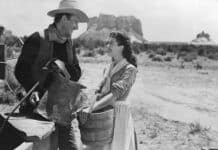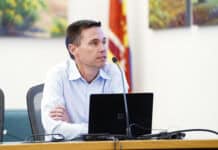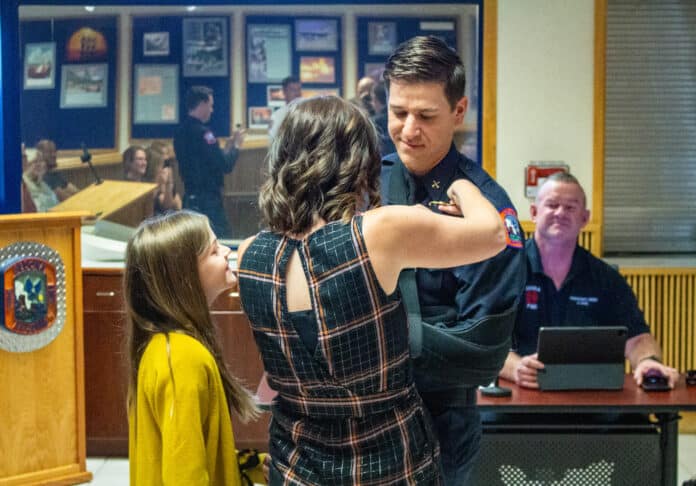
The Sedona Fire District held its badge-pinning ceremony ahead of its scheduled Governing Board meeting on Tuesday, June 20.
Relatives of those receiving promotions were on hand to pin staff’s new badges on for their respective promotions before the unceremonious and unanimous passage of the district’s fiscal year 2024 budget.
“This is an exciting board meeting for me,” SFD Chief Ed Mezulis said to open the proceedings. “I don’t think we’ve had this much of a change in leadership at SFD [in] over 10 years. Those that came before taught us lessons and we’ve carried those forward and developed our own strategies. This is just another iteration of Sedona Fire … A lot of changes [are] going on at Sedona Fire and I’m really excited for what the future holds.”
The district’s new division chiefs are Eric “Buzz” Lechowski and Jordan Baker. Eric Lewis and Todd Miranda replaced them as battalion chiefs, while Jonathan Scaife and Greg Eberlein moved up to the rank of Captain.
Millian Zorita was named an engineer after serving as a firefighter.
New hires Michael Hardy, Indiana Palmer and Tarren Soto were pinned with their probationary firefighter badges.
The event also celebrated engineer Andrew Johnson and firefighter Lars Romig’s 15 years and firefighter Jesse Cave’s 10 years of service with SFD.
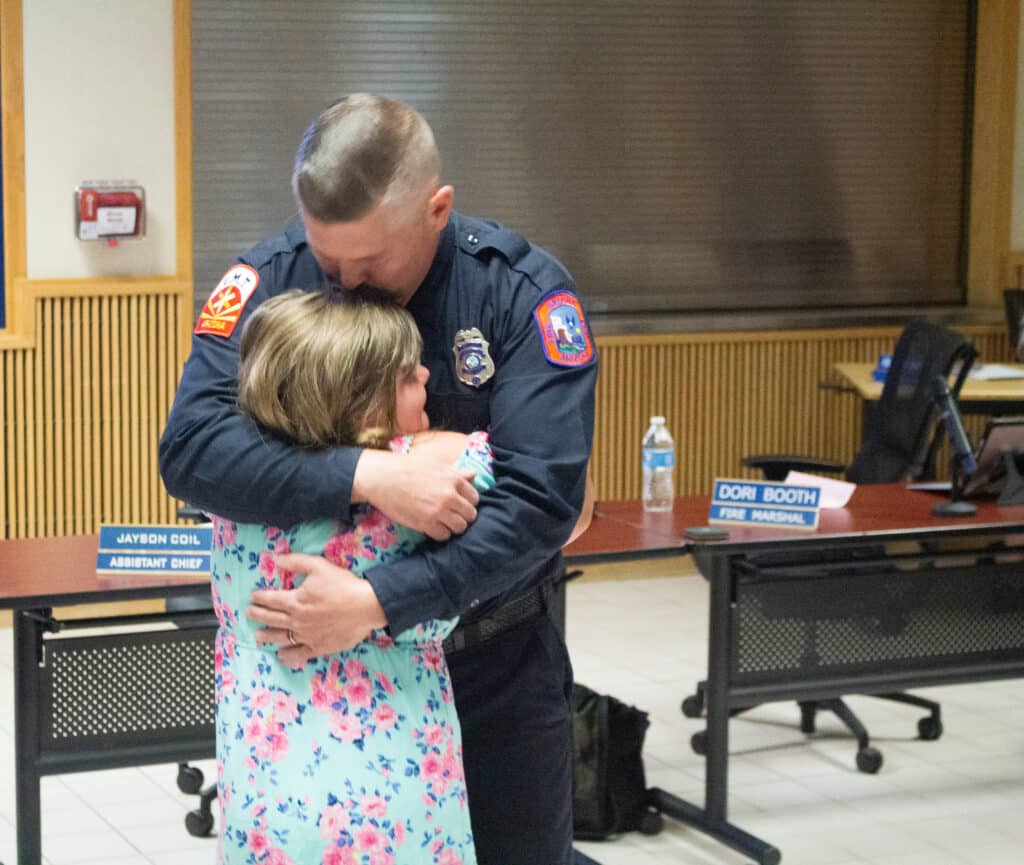
2024 SFD Budget
The 2024 budget is $23.8 million with a mil rate of $2.703, meaning residents will pay $2.703 for every $1,000 of their property’s assessed value, or a 4.16% tax increase.
“It’s the highest budget that we’ve had,” SFD Board President Dave Soto said. “But [it] is a budget that is affected by a cost of living that no one expected would be that high, amongst other things, such as workers comp, various pensions, fees. When you look at all that and you look at the package that we have before us, I think it is one of the tightest ones we have ever had.”
SFD staff will receive a 6.5% cost-of living adjustment, meaning their salaries will not keep pace with inflation at 8.5%, as determined during SFD’s budget workshops. The firefighters’ union had requested a 7% COLA.
No members of the public offered comments. The board passed the budget unanimously.
SFD’s total revenue for last month was $1 million, which was $259,223 under budget according to the district’s May financial report, in part because the district has not been deployed on any wildland fire calls so far this year.
Ambulance revenue for May was around $20,000 under budget according to SFD Finance Director Gabe Buldra, and has been lagging so far this year.
The district’s total expenses for May were $1.3 million, which was $81,436 under budget. Buldra also added that Fire Station 6 is now paid off.
Assistant Chief Jayson Coil informed the board that there are 48 successful applicants who have completed basic math and reading requirements for firefighter vacancies in the district. Coil said that historically, about 60% of those will move forward with the process.
Mezulis considered that to be a commendable number of applicants, saying that most rural fire districts in the state have about 30 applicants and that most fire districts statewide are currently hiring.
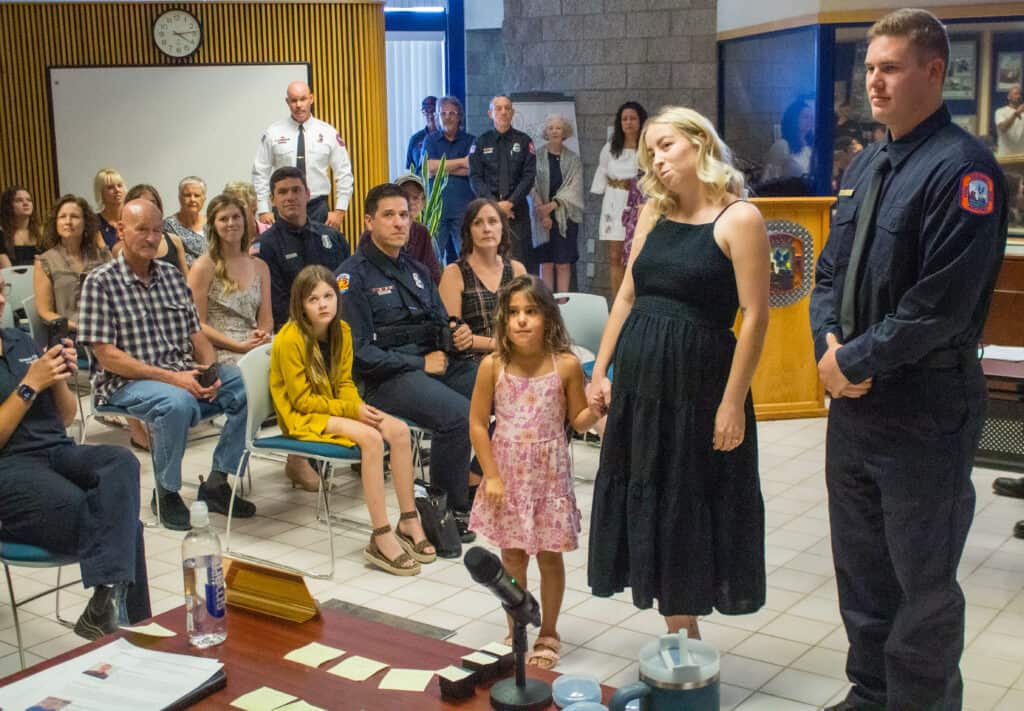
Technology
Call volume rose to a new year-to-date high of 442 calls for the month of May. The total number of calls year-to-date is 2,003, a 2.45% increase from this time last year.
“I think that’s attributed to good weather and travelers. We’re going to see similar numbers at the end of this month,” Mezulis said. “We’re about a little over, a little under, 50 calls more than last year, year-to-date. We haven’t had any major wildfires, obstructing traffic, no major, major weather events and it’s been cooler out. I think we’re going [to] continue to trend upward for the rest of the year.”
The Federal Communications Commission requires that the longitude and latitude of calls be made available to 911 service providers. SFD has been expanding its use of GPS to better track where calls are coming from and has made capital purchases such as iPads for ambulances to use that data to better respond to incidents.
Mezulis explained that additional data has been extremely useful during search and rescue incidents when responders are able to target a caller’s specific location rather than a trailhead.
“Before Phase II compliance, we’d get dispatched to Bell Rock for an injured hiker,” Mezulis said. “We’d go in and start hiking until we found somebody hurt. Now, with the GPS, it’ll give us within a three-meter [margin] of confidence where that person actually is. It changes whether we respond to the north and south parking lots … Or someone may have started Soldiers Pass, but they’re over in the neighborhood. And it’s a 200-yard walk versus a two-mile walk. So the GPS has helped to clearly understand where those patients are. And get to them quicker.”
“We’ve adopted some equipment to be able to utilize the [GPS data] in a realtime environment. Years ago, it was a little Garmin unit with a tiny screen,” he added. “Now we can populate [a caller] on an iPad, see real-time mapping and topography.”
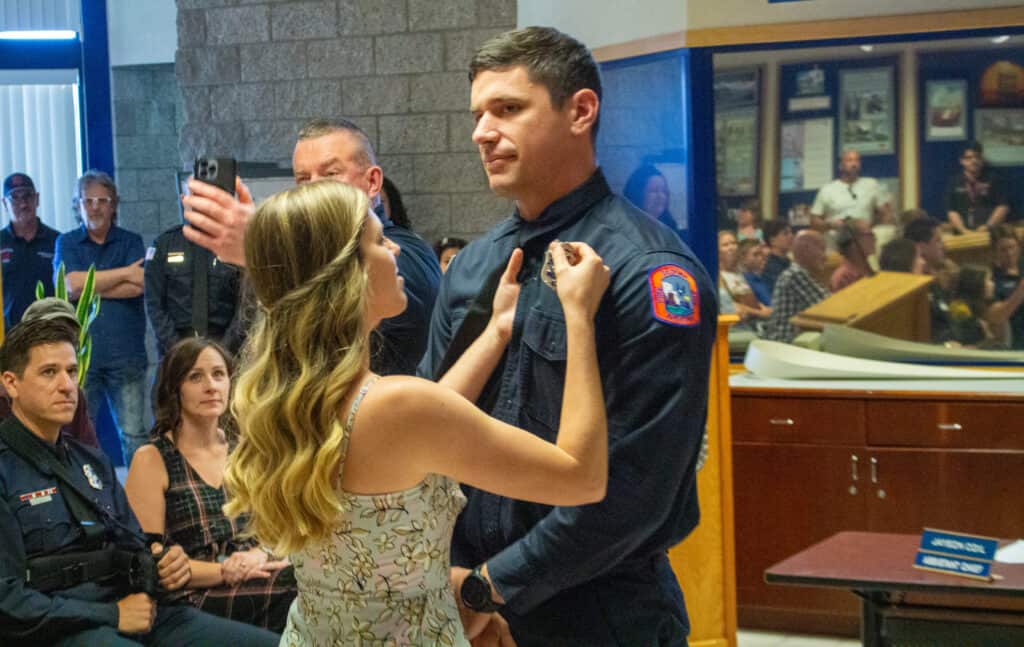
Regional
The replacement of the fuel storage system at Sedona Airport is nearly complete after a “soft opening,” according to Division Chief Dori Booth.
“We started allowing fuel into that right about the time the Miller Fire started [on May 20],” Booth said. “Which worked out good because the helibase was set up there, so less fuel was being trucked up and down the hill. It’s definitely in a safer, more modern fuel farm.”


